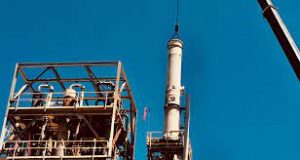How Does Brownfield Engineering Contribute to Sustainable Development?
Brownfield Engineering Contribute to Sustainable Development
Brownfield engineering is a multidisciplinary field that applies technical expertise and innovation to transform former industrial sites into sustainable commercial, residential, recreational and ecological uses. These projects reclaim polluted land and turn it into productive assets for communities, which boosts economy and job opportunities, mitigates environmental degradation, promotes biodiversity, and alleviates pressure on the need to develop pristine, undeveloped land.
A key aspect of brownfield engineering is environmental restoration, which involves the remediation of contaminated soil and groundwater on blighted sites. The process can be costly, but it is necessary to protect public health and the environment. It also reduces greenhouse gas emissions by preventing the need to build new infrastructure on virgin sites.

As an environmentally conscious profession, environmental engineers play a vital role in the rehabilitation and redevelopment of brownfield sites. They conduct site assessments, identify contaminants, and devise cleanup plans that minimize the impact of the redevelopment on the surrounding community and environment. They help communities assess the reuse potential of their blighted properties, and they collaborate with local stakeholders throughout the process to ensure that the final result will benefit all parties involved.
How Does Brownfield Engineering Contribute to Sustainable Development?
Using their specialized knowledge of hazardous materials, toxicological sciences, and environmental regulations, brownfield engineers develop and implement comprehensive cleanup and remediation strategies to make previously polluted properties safe for human use. These professionals work on sites that are formerly used for manufacturing, transportation, and warehousing to address a wide range of contaminants including volatile organic compounds, poly chlorinated biphenyls (PCB), solvents, heavy metals, and petroleum-related products.
One of the biggest challenges with redeveloping brownfields is that these sites often have complex soil, water, and air conditions, which require extensive testing and analysis to determine their impact on surrounding communities. Environmental engineers use their scientific and analytical problem-solving skills to provide accurate, cost effective solutions that reduce the risk of future contamination and ensure the safety of the communities they serve.
While there are many differences between countries in terms of environmental regulatory structures, forms of government, land ownership and taxation, the need to repurpose blighted properties is universal. A number of cities across the world have developed brownfield engineering programs that reclaim and restore abandoned industrial, commercial, and military sites. These projects contribute to urban and economic growth and development, revitalize neighborhoods, and improve the quality of life.
The goal of the Stockholm Royal Seaport is to repurpose a 356-hectare brownfield into a hub for industry, trade, and housing through an innovative partnership approach. Similar efforts are being made around the globe, reclaiming former industrial sites to advance commerce, jobs, and growth.
A significant factor in the success of a brownfield redevelopment project is the involvement and support of community members. The community surveys and engagement activities that are conducted by brownfield engineers help to build community trust and ensure the progress of a redevelopment project. This support can be temporary, like during construction and redevelopment, or permanent as businesses set up shop in the area.